Apart from being the emblem of NSW, the Waratah is also a terrific garden plant that can handle a mix of sun and shade while producing a brilliant floral display over a six week period in springtime.
It is perhaps it's tolerance of both sun and shade that makes it so useful - though it's preference would be for some morning sun, but needs shade from the hotter, sometimes scorching afternoon sun. We all have those tricky, mixed light patches in our gardens and we need versatile plants to fill them.
Some say that the Warath is difficult to grow, but if you get the basics right then this plant can be very rewarding while attracting nectar feeding birds to your garden.
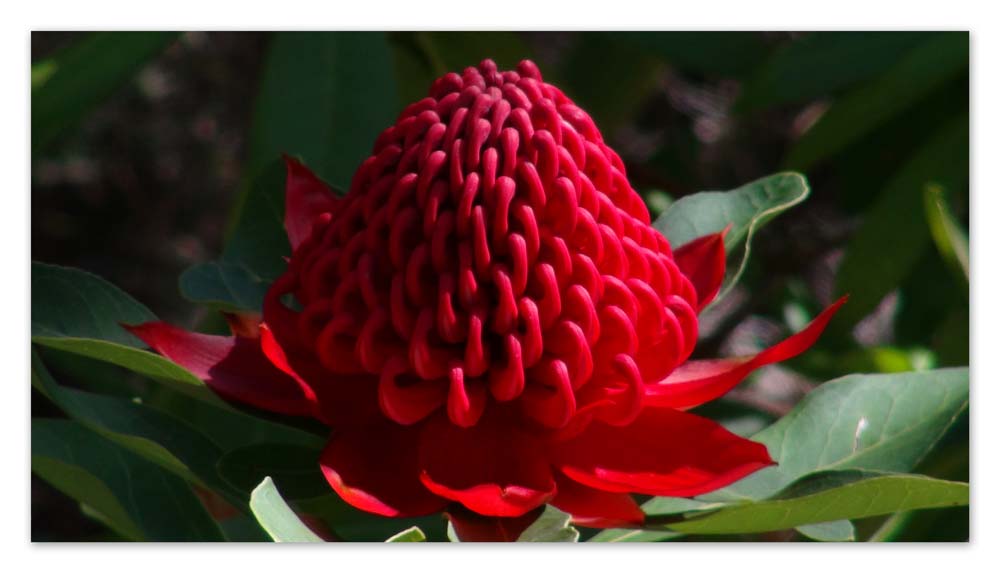
Planting:
The easiest way to start is to buy an established seedling from a garden centre - 20-30cms high would be ideal as it will have good roots by then. Though ensure it isn't pot-bound or have a deformed main stem before you buy.
If you plant directly into the ground then ensure your soil is very well drained, even sandy if possible. They can tolerate quite poor soils but will be doomed to failure in heavy clay soils. Raised beds are perfect as any significant amounts of lingering water will cause root-rot or Phytophthora cinnamomi to set in.
Add plenty of well composted organic matter to the hole, which needs to be much larger than the rootball, before filling it in. A cover of mulch or leaf litter will also help retain moisture access for the roots and also keep them cool.
All this will be predicated by a good choice of location - sheltered from strong winds, plenty of morning sun and some shade for later in the day, but overall a nice, bright spot as they will be bushier and more floriferous with good light. Dappled light under eucalypts is perfect.
If you plant in pots then ensure they have plenty of root space, a larger tub is preferred to small pots and a breathable material like wooden tubs or terraccotta pots are much better than plastic pots. Ensure, again, that it is well drained with some crocks in the base of the pot so that the potting mix does not block the drain hole.
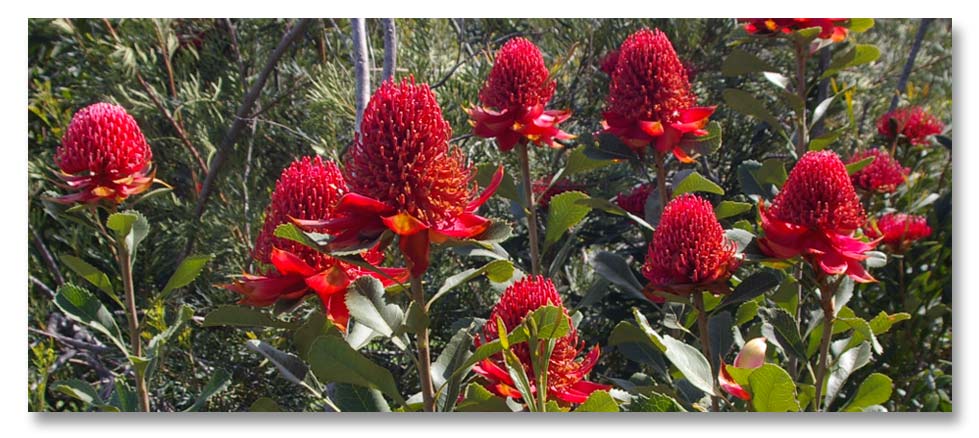
Maintenance:
Once planted you will need patience for it to reach its mature height of around three metres. These are not initial bolters, they take their time to get established and may not produce flowers in the first year after planting. But they will need your nurturing in the meantime.
Water regularly, around once a week, more in the hotter months and ensure the mulch cover remains thick. Some gardeners swear by drip-watering to keep a conistent supply available to the roots. Whatever you do don't let them dry out which will stress them and make them susceptible to pest attacks.
Fertilising must be done carefully - ALWAYS choose a low phosphorus formulation, usually labelled as 'Safe for Natives' and apply in early spring and again after pruning. A slow release formulation like 'Bush Tucker' is best, while a good, simple alternative is Blood and Bone that is naturally slow release. Just rake it lightly into the surface around the plant drip-line, this also helps reduce the initial odour, which naturally fades quite quickly anyway.
Finally, once you have enjoyed your first flush of blooms you will need to prune it back as this plant does respond well to strong pruning. Cutting just above a healthy bud or node, you'll need to take around one third to a half off the plant off using nice sharp secateurs or loppers, this will encourage it to stay tight and bushy and produce more flowers next spring. A full sized plant cut down to waist height is a good guide.
If your plant is getting a bit leggy then it could be a sign of lack of light - pruning will keep it looking better overall. However they don't respond well to transplanting, as with most natives.
Pests can bother them at times with borers munching into flowers and stems, particularly if the plant is stressed. Scale can also be an occasional problem but it is rarely debilitating and often treated easily with Pest Oil, which suffocates them.
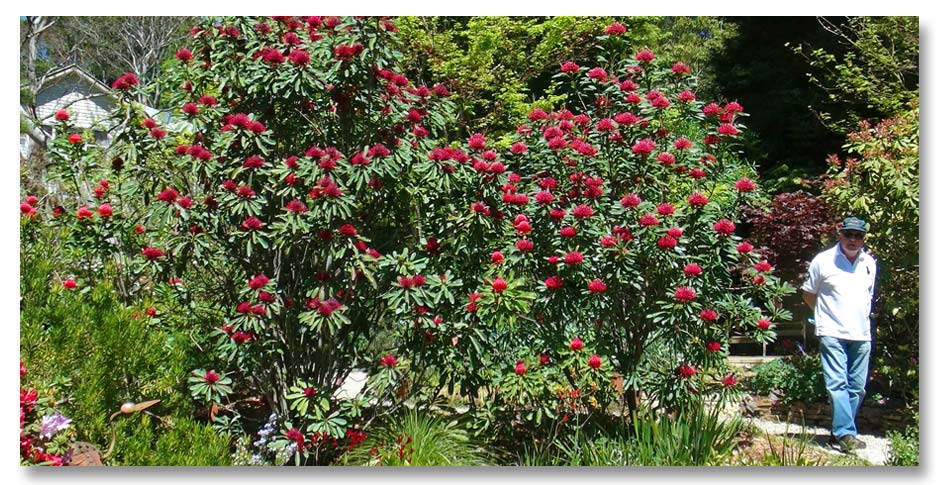
Propagation:
If you are keen (and patient) you can propagate these plants either from seed or strike from cuttings. Seeds need to be as fresh as possible, though the seed pod does take around six months to mature and break open, revealling the many winged seeds. Use a well drained seedling mix and water in well. When you prick them out ensure that your potting mix has no added fertiliser, which could have excess phosphorous in it which the Telopea roots do not like at all. Seedlings may take up to five years to bloom and there can be quite a genetic variability, which is why striking from cuttings is the preferred method.
Always choose a strong plant and proven bloomer to strike from then take 15cms long cuttings with three healthy looking nodes. Always do this after flowering in early summer from recent, green growth.
Dip in a rooting hormone and plant into a seed raising mix or fertiliser free potting mix with some added Perlite. Keep warm and moist for six months and you should be seeing some signs of new growth. A good test for roots is to gently pull the cutting upwards, if there is resistance there are roots holding it back, if it slides out easily then you can just replace it and firm it back in again.
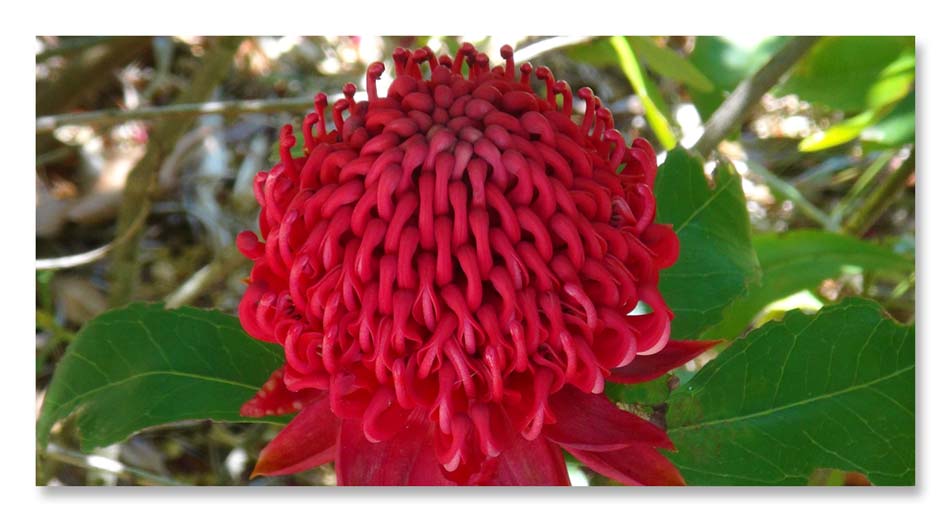
Summary:
These stunning, torch-like flowers are made up of scores of infloresences that are surrounded by protective, coloured bracts. They make the most striking cut flowers, often lasting for up to two weeks, but trim off a few millimetres of stem each time you change the water.
The name Telopea comes from the Greek 'telopos' which means 'seen from afar', while the species name of the Sydney Waratah, 'specioisissima' means 'showy'. They are very adept at recovering from bush fires, re-sprouting from the lignotuber that marks the join between root and trunk at ground level, or just below.
There are countless cultivars on the market and a selection of other species and naturally occurring varieties including some particularly beautiful varieties with creamy flowers and a greenish centre. The Shady Lady White is a popular cultivar.
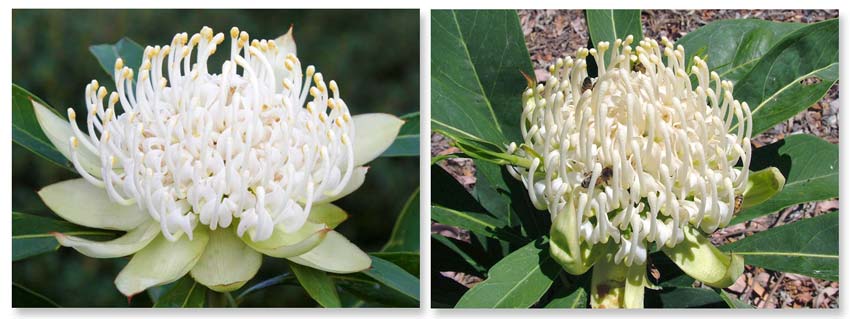
For more info see our Plantfinder page.